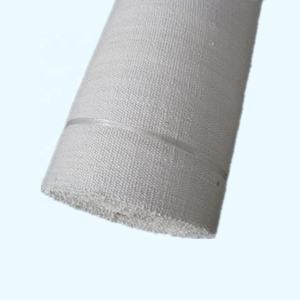Professional industry ceramic supplier, silicon nitride, silicon carbide, aluminum nitride and any other kinds of ceramics.
PRODUCT PARAMETERS
Description
Overview of Biosoluble ceramic fiber textiles, bio- and biofrax thermal insulation, biosoluble fiber yarn
Biosoluble ceramic fiber textiles, bio- and biofrax thermal insulation, biosoluble fiber yarn is a lightweight, high-temperature insulation material composed primarily of alumina-silica. It is manufactured through a melting and spinning or blowing process, resulting in a flexible, wool-like textile. This material is engineered to provide exceptional thermal management, conserving energy and protecting equipment in extreme temperature environments across various industries.
Features of Biosoluble ceramic fiber textiles, bio- and biofrax thermal insulation, biosoluble fiber yarn
-
Excellent Thermal Stability: Withstands continuous operating temperatures up to 1260°C (2300°F) and higher for certain grades, with minimal shrinkage.
-
Low Thermal Conductivity: Provides highly efficient insulation, reducing heat loss and improving energy efficiency.
-
Lightweight & Low Heat Storage: Offers low thermal mass, enabling rapid heat-up and cool-down cycles for improved process control and energy savings.
-
Thermal Shock Resistance: Highly resistant to damage from rapid temperature changes.
-
Excellent Flexibility & Resilience: Can be fabricated into blankets, boards, papers, and textiles to fit complex shapes and applications.
-
Good Chemical Stability: Resists attack from most corrosive agents, except strong alkalis and hydrofluoric acid.
Specification of Biosoluble ceramic fiber textiles, bio- and biofrax thermal insulation, biosoluble fiber yarn
Biosoluble ceramic fiber textiles provide reliable heat protection. These fabrics handle extreme temperatures safely. They resist heat very well. The special ceramic fibers are biosoluble. This means they break down naturally inside the human body over time. This is a key safety advantage compared to older ceramic wools. Workers face lower health risks during installation or maintenance. The material is also strong and durable.
Bio-Soluble and Biofrax are leading brands of biosoluble thermal insulation. They offer similar core benefits. Both types use advanced alumina-silicate chemistry. This achieves excellent biosolubility. They insulate effectively at high temperatures. You find them in furnace linings, pipe insulation, and industrial equipment. They conserve energy efficiently. Their low heat storage helps systems cool down faster. This improves process control. These products meet strict safety certifications globally.
Biosoluble fiber yarn is essential for weaving protective textiles. This yarn is spun directly from biosoluble ceramic fibers. It maintains the fiber’s inherent heat resistance and biosolubility. Manufacturers use it to create various fabrics. These include cloth, tape, braided sleeving, and rope. The yarn is flexible and strong. It performs well under continuous heat stress. Sewing or handling it is straightforward. This yarn ensures the final textile product keeps its critical safety properties. It’s a fundamental component for safe, high-temperature applications.
Applications of Biosoluble ceramic fiber textiles, bio- and biofrax thermal insulation, biosoluble fiber yarn
Biosoluble ceramic fiber textiles handle serious heat. They insulate extremely well in demanding industrial settings. Furnaces and kilns use them often. Boilers and pipes rely on them too. These textiles withstand constant high temperatures without breaking down. They remain strong and effective.
Safety matters greatly with these materials. Traditional ceramic fibers can pose health risks. Biosoluble fibers dissolve naturally inside the human body. Workers face much less danger during installation or maintenance. Accidental fiber inhalation becomes far less concerning. This is a major advantage over older insulation types.
Bio-Soluble and Biofrax thermal insulation products build on this safety. They offer excellent thermal performance like standard ceramic fibers. Their key difference is the biosoluble composition. This makes them safer for people handling them. Factories and plants value this protection. They need reliable insulation that protects their teams. These materials deliver that security alongside top heat resistance.
Biosoluble fiber yarn is versatile. It allows weaving custom fabrics or braiding rope. Sewing insulation blankets becomes possible. Creating specialized gaskets or seals uses this yarn. The yarn holds the same biosoluble properties. It provides flexibility for complex insulation jobs. Designers solve tricky insulation problems with it.
These materials work in many high-heat situations. Petrochemical plants use them extensively. Power generation facilities depend on their insulation. Steel foundries and glass manufacturers apply them too. Aerospace applications benefit from their properties. The core benefit remains consistent: powerful heat protection with built-in safety. Disposal is simpler and safer also. The fibers break down naturally over time. This reduces long-term environmental worries.
Company Profile
Tanki New Materials Co.Ltd. focus on the research and development, production and sales of ceramic products, serving the electronics, ceramics, chemical and other industries. Since its establishment in 2015, the company has been committed to providing customers with the best products and services, and has become a leader in the industry through continuous technological innovation and strict quality management.
Our products includes but not limited to Aerogel, Aluminum Nitride, Aluminum Oxide, Boron Carbide, Boron Nitride, Ceramic Crucible, Ceramic Fiber, Quartz Product, Refractory Material, Silicon Carbide, Silicon Nitride, ect. please feel free to contact us.

Payment Methods
T/T, Western Union, Paypal, Credit Card etc.
Shipment Methods
By air, by sea, by express, as customers request.
5 FAQs of Biosoluble ceramic fiber textiles, bio- and biofrax thermal insulation, biosoluble fiber yarn
What are biosoluble ceramic fiber textiles?
These are special fabrics made from man-made mineral fibers. The fibers dissolve safely in body fluids over time. This makes them much safer to handle than older ceramic fiber types. Workers face lower health risks during installation or removal.
Why choose biosoluble insulation over traditional ceramic fiber?
Old ceramic fibers stick around in lungs if inhaled. Biosoluble fibers break down naturally inside the body. This reduces the danger of long-term lung disease. Safety regulations now often require biosoluble materials for worker protection.
How hot can biosoluble textiles handle?
Performance depends on the exact fiber blend. Many biosoluble textiles work well from 1260°C down to very cold temperatures. Always check the specific product’s temperature rating. Using it beyond its limit damages the material.
Where are biosoluble fiber textiles used?
They insulate pipes, boilers, and furnaces in power plants and refineries. You find them in gaskets, seals, and fire barriers. They protect workers and equipment needing high heat protection. Their flexibility suits complex shapes.
Are biosoluble yarn, Bio-Soluble, and Biofrax the same?
They share the key biosoluble safety feature. The names often refer to specific brands or product forms. Bio-Soluble and Biofrax are well-known brand names for biosoluble fiber products. Biosoluble yarn is simply the textile form of these fibers. The core benefit is the same safe dissolution.
REQUEST A QUOTE
RELATED PRODUCTS

1430CCeramic fiber insulation module
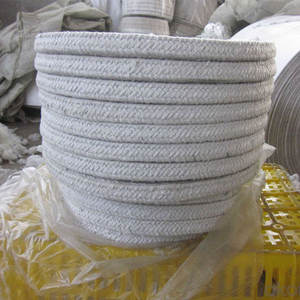
BIOWOOL Insulation Blocks, Ceramic Fiber or Various Ceramic Fiber Products with Biosoluble Fiber
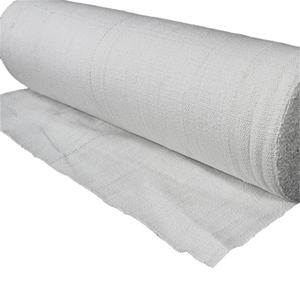
Polycrystalline Fiber Bulk. High-Temperature Ceramic Fiber Wool Bulk for Filling Wall Lining Gap.
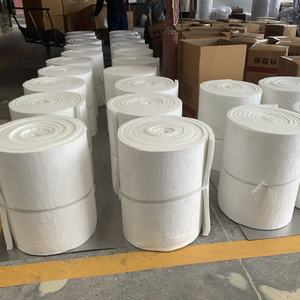
Ceramic fiber blankets for 1260°C, 1400°C, and 1600°C. of various specifications for insulation fiber blankets.
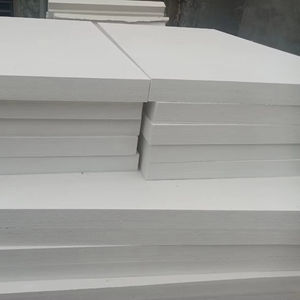
High-quality 1260°C Ceramic Fiber Blanket for Insulation and Refractory Ceramic Wool Blanket


